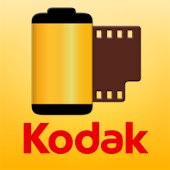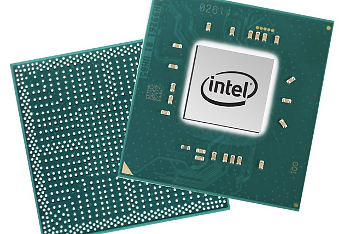 A Bitcoin competitor?
A Bitcoin competitor?
Kodak’s stock doubles after camera and film pioneer boards blockchain bandwagon
Marketwatch – By: Emily Bary – “The latest trend among companies trying to drum up interest: announcing plans to introduce blockchain into the business.
Eastman Kodak Co. on Tuesday became the latest to do so, when the company said it would begin a ‘major blockchain initiative.’ Kodak intends to use digital ledgers to help photographers license their work and get paid for usage.
The stock KODK, +119.35% more than doubled on the news, rocketing $3.70, or 119%, to $6.80 in very active trade, after being down as much as 1.6% before the news. Trading volume spiked to 64.9 million shares from a full-day average volume of about 264,000 shares, according to FactSet.
After closing at a record low of $3.05 as recently as Jan. 4, the Tuesday move was the biggest gain and saw the most shares traded in a day since the stock began trading in its current form in September 2013.
The company and WENN Digital announced the launch Tuesday of the KODAKOne image-rights management platform and KODAKCoin, a photo-centric cryptocurrency.
For its part, Kodak acknowledged in its press release that blockchain, like cryptocurrency, is a ‘hot buzzword’ right now, but CEO Jeff Clarke said that the technology will actually prove useful in the company’s case. ‘For photographers who’ve long struggled to assert control over their work and how it’s used, these buzzwords are the keys to solving what felt like an unsolvable problem,’ he said in the release.
Kodak added that distributed-ledger technology, which is the backbone of cryptographic currencies, will help spot unlicensed usage of photos.
The latest trend among companies trying to drum up interest: announcing plans to introduce blockchain into the business.
Eastman Kodak Co. on Tuesday became the latest to do so, when the company said it would begin a ‘major blockchain initiative.’ Kodak intends to use digital ledgers to help photographers license their work and get paid for usage.
The stock KODK, +119.35% more than doubled on the news, rocketing $3.70, or 119%, to $6.80 in very active trade, after being down as much as 1.6% before the news. Trading volume spiked to 64.9 million shares from a full-day average volume of about 264,000 shares, according to FactSet.
After closing at a record low of $3.05 as recently as Jan. 4, the Tuesday move was the biggest gain and saw the most shares traded in a day since the stock began trading in its current form in September 2013.
The company and WENN Digital announced the launch Tuesday of the KODAKOne image-rights management platform and KODAKCoin, a photo-centric cryptocurrency.
For its part, Kodak acknowledged in its press release that blockchain, like cryptocurrency, is a ‘hot buzzword’ right now, but CEO Jeff Clarke said that the technology will actually prove useful in the company’s case. ‘For photographers who’ve long struggled to assert control over their work and how it’s used, these buzzwords are the keys to solving what felt like an unsolvable problem,’ he said in the release.
Kodak added that distributed-ledger technology, which is the backbone of cryptographic currencies, will help spot unlicensed usage of photos.
FactSet, MarketWatch
‘We are using Ethereum Smart Contracts, but we’re also developing our own proprietary blockchain and will evaluate the optimal solution during development,’ Kodak said in a statement.
The company, founded in 1888 in Rochester, N.Y., said it plans to launch an initial coin offering, or ICO, for KodakCoin, the cryptocurrency that will become the backbone of the new payment system. ICOs have emerged as a method of raising capital among ventures using digital tokens.
The ICO target is $20 million, with the potential to go up to $100 million.
‘This is a WENN digital currency,’ Kodak said in a statement. ‘Eastman Kodak Company will not be an issuer of the ICO, will not receive proceeds on the ICO.’
Companies demonstrating sudden interest in blockchain of late have been well received by investors looking for new ways to play the cryptocurrency trend. Shares of Riot Blockchain Inc. RIOT, +2.56% , once an unknown ‘animal healthcare’ company, have soared since the company announced its pivot toward blockchain. See CryptoWatch.
Then there are the more established brands, including Long Island Iced Tea Corp., which recently became Long Blockchain Corp. LBCC, +19.59% and enjoyed a nice stock-market boost for the name change. Hooters parent Chanticleer Holdings Inc. BURG, -7.65% said earlier this month that it would use cryptocurrency for its loyalty program, which sent the Chanticleer stock up sharply.
Kodak, which emerged from bankruptcy in September 2013 after a precipitous decline in fortunes that found it evicted from the Dow Jones Industrial Average DJIA, +0.41% in 2004, is a poster child for failing to embrace new technologies fast enough.
Kodak’s blockchain announcement boosted the company’s market value by $157.5 million on Tuesday, to $289.5 million. The stock remains down 55.6% over the past 12 months, compared with a 21.3% surge in the S&P 500 index SPX, +0.13% , even after Tuesday’s run-up.”
 Ouch! I hope you have newer systems!
Ouch! I hope you have newer systems! Would you pay $499.00 for a videophone for Facebook?
Would you pay $499.00 for a videophone for Facebook?
 A Bitcoin competitor?
A Bitcoin competitor? LAS VEGAS, Jan. 9, 2018 – “Toyota announced today it will introduce Amazon Alexa, Amazon’s intelligent cloud based voice service, within select Toyota and Lexus vehicles with Toyota Entune 3.0 App Suite and Lexus Enform App Suite 2.0 in 2018. Additional models will be available in 2019. This feature will allow Toyota and Lexus customers in the United States to interact with Alexa in the car.
LAS VEGAS, Jan. 9, 2018 – “Toyota announced today it will introduce Amazon Alexa, Amazon’s intelligent cloud based voice service, within select Toyota and Lexus vehicles with Toyota Entune 3.0 App Suite and Lexus Enform App Suite 2.0 in 2018. Additional models will be available in 2019. This feature will allow Toyota and Lexus customers in the United States to interact with Alexa in the car.